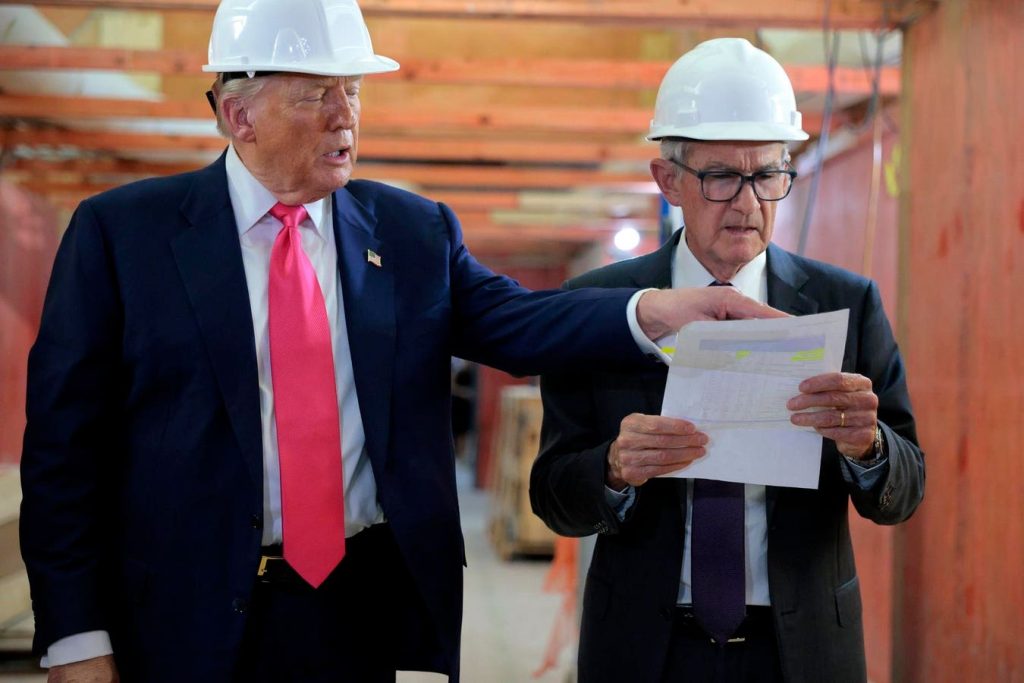Because of the shutdown the BLS won’t publish jobs numbers this morning at 8:30amET.
Though this reporting gap is not a direct attack on the Bureau of Labor Statistics (BLS) like the one in August when President Trump fired experienced economist and statistician BLS Commissioner Erika McEntarfer . He said the disappointing numbers – showing job growth was well below expectations — were “phony.” But I never really understood the reasoning. Trump’s ire about the bad labor market report puzzles me. President Trump wants the Fed to lower interest rates and a weaker labor market points in that direction.
Soft Labor Markets, Weaker Labor Power, And Fed Action
The Fed closely watches the labor market for signs of labor power. A soft labor market suppresses worker power indirectly and the recent Trump polices to weaken unions suppresses worker power directly. Trump’s policies have made weak unions even weaker. He fired between 400,000 and 1 million federal workers. And since many paid union dues their unions lost revenue. He also fired the NLRB chief within days of his new term, making it less risky for an employer to retaliate when their employees organize and to not bargain in good faith.
A Weaker Labor Market
For now, Jerome Powell probably doesn’t need the BLS report to convince the Federal Reserve Governors the labor market is cooling.
The unemployment rate crept up to 4.3% in August – at least 7.4 million Americans are out of work. And this week’s ADP report also looks scary for workers’ power, job creation was only 32,000 when the norm is well over 100 thousand.
Payroll growth? Practically flat, the BLS reports with only 22,000 jobs added in August. That’s not a hot labor market.
And more proof workers are on their back foot is the “Take This Job and Shove It” indicator (I coined that descriptive term) – quits – is falling.
The quits rate has slipped to 1.9%, with about 3.1 million people quitting in August, down from about 2.0% in July. Translation: people cling to their jobs when the market gets chilly. Even in leisure and hospitality, where quitting is as common as dropping trays of margaritas on the guy who pinched your ass, workers are staying put.
And, more bad news for workers, job openings are down to 7.2 million, the hires rate is stuck at 3.2%, and layoffs hover around 1.1%. That’s not heat; that’s a fading simmer. When quits and openings both shrink, labor’s bargaining power goes on ice.
The upshot of a longstanding decline in union power is that labor’s share of GDP has been falling since the 1970s. The Federal Reserve Bank of St. Louis reports the peak share was about (64.8 %) in 1970 and except during the time of the Great Recession when asset values fell sharply in a few months it’s been a steady downward trend. In the most recent time report (2019) labor’s share is 59.7%. That’s the long arc of worker disempowerment.
Side Note About Labor Power And Tariffs
Just as I was puzzled by Trump attacking the BLS for reporting what Trump needed, I am equally puzzled by Trump’s tariff policies. Tariffs raise prices for imported goods, the goal is to steer Americans away from imports to “Buy American” to help workers. The logic is a 40% increase in Canadian lumber incents Americans to plant American trees – helping American lumber and sawmill workers.
But that goal doesn’t connect to another goal – using tariffs to raise revenue. To raise revenue he needs Americans’ to buy tariffed – imports. But that means American workers pay higher prices and see little job growth from the tariffs, in contradiction to the first goal. Economists warn you can’t have tariff cake and eat it too. A nation can’t stop imports with tariffs and get money from tariffs at the same time.
Perhaps, the only rationale for tariffs are political. Trump is using tariffs for “off-label” geo-political purposes – pressuring the Brazilian government to not jail former President Bolsonaro in exchange for lower tariffs. Fine, that tariffs take on another plane; but that use is not about economic growth or helping American workers.
Fed Likely to Cut Interest Rates And Still Worry About Inflation
So what’s the bottom line? Though there is little evidence worker power has caused inflation since the 1970 – 50 years ago. Now, housing supply constraints, lack of immigrant labor, and tariffs are the biggest worries among inflation hawks.
A softer labor market and the possibilities of recession leave more room for the Fed to cut interest rates without worrying about runaway inflation. But policy is a little off without timely reliable numbers.
Looking forward to a robust, independent BLS back on line soon.
Read the full article here
